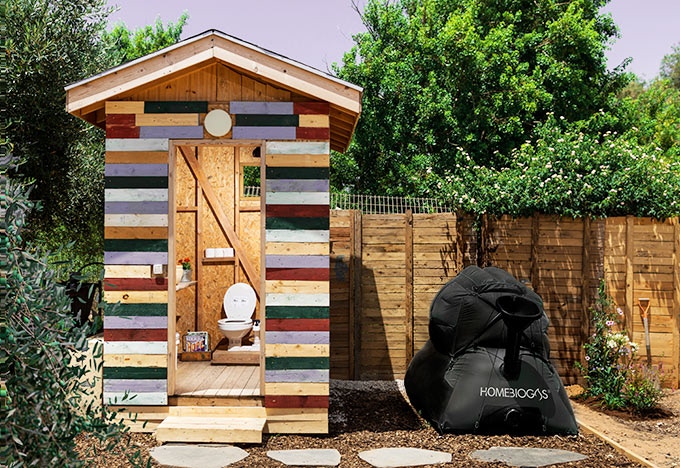
WHAT IS COMPOST TOILET AND THE RISE OF THEIR USAGE
With climate change being a hot button issue now, many people are left wondering what they can do to lower their carbon footprint. From recycling food packaging and buying second hand clothing, to limiting personal car use and turning off lights when we leave our home, there are plenty of obvious and straightforward ways that we can be kinder to the planet. But what about the less common ways of doing our part for the environment?
For many people, ‘compost’ is an intimidating word. People aren’t sure what exactly it means to compost, what kind of supplies it requires and they worry that it may just be too complicated for them. Add on the word ‘toilet,’ and things start to get messy. Compost toilet, what’s that? If you’ve ever wondered how does compost toilet work, you’re not alone. A lot of people are intrigued by the idea of cutting back on all the water and energy waste used when they flush the toilet. They also wonder, where exactly is all of the ‘stuff’ going once they flush it down the toilet. If you’re asking these questions and thinking about the compost toilet, you’re already on the right track.
If the average person flushes the toilet about 5 times a day and they are doing that 365 days a year, they are doing about 1,825 flushes a year. In fact, ⅓ of all water usage in most households is usually from flushing the toilet. Now imagine that bringing in a compost toilet, or another type of eco-friendly toilet system, could do away with the roughly 3,650 gallons of water we each waste on toilet flushing every year.
Compost toilet usage is on the rise, with more people turning to safe and eco-friendly bathroom options. Compost toilets and eco-toilets in general are more commonly used than one might initially think. In fact, you’ve probably used one of these environmentally friendly toilets, possibly even a compost toilet, before, perhaps without even realizing it.
If you’re wondering if of all the environmentally friendly and sustainable products available for a variety of areas in our lives, why eco-toilets are seeing a rise in popularity, the answer is simple. While there are so many things that we do on a day-to-day basis that are harmful to the environment, how we go to the bathroom is one that leaves room for a whole lot of improvement. For example, in developing countries, poor sanitation often goes hand-in-hand with bathroom usage and therefore disease follows. Many places around the world could benefit from alternative ways of disposing of human waste. Another reason for seeking innovation in our bathroom systems is to make better usage of our renewable resources. All over the world, in both developing and developed countries, more sustainable and natural fertilizers options are in demand.
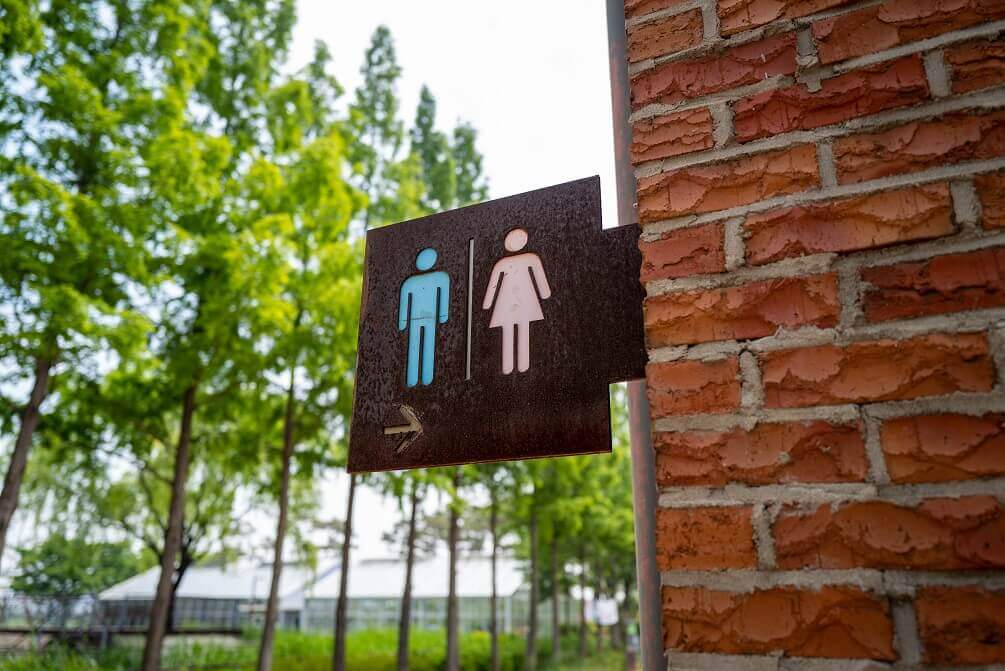
HOW DOES COMPOST TOILET WORK?
If you’re wondering how does compost toilet work, then you’ve come to the right place! Compost toilets apply the same science as composting food waste. A compost toilet is a waterless eco-toilet that dissolves waste through evaporation and natural decomposition.
There are three steps that must occur in a compost toilet in order for the process to be fully completed.
Firstly, there is the evaporation of the liquids. Waste that enters a compost toilet is 90% water so it quickly evaporates and goes back to the atmosphere through the compost toilet’s vent system.
Next, the waste must break down. Left to break down on its own, waste would take a long time and would result in a very foul smell, like with an old outhouse. With the help of dry materials, commonly known as bulking agents, like saw dust, crushed leaves, coconut fibers or even popcorn, a properly running, modern compost toilet is able to be moist without being too wet. This design allows the aerobic bacteria to decompose without odor, creating a safe and disease free waste pile that can be reused as fertilizer.
The final step of using a compost toilet is emptying the compost toilet itself. The idea of emptying a compost toilet may sound gross, but with a properly working eco toilet, there shouldn’t be anything remaining that is actually too unpleasant. The beauty of these modern systems is that they produce an odorless and safe to handle final product that is essentially a nutrient rich soil. Pretty cool, right?!
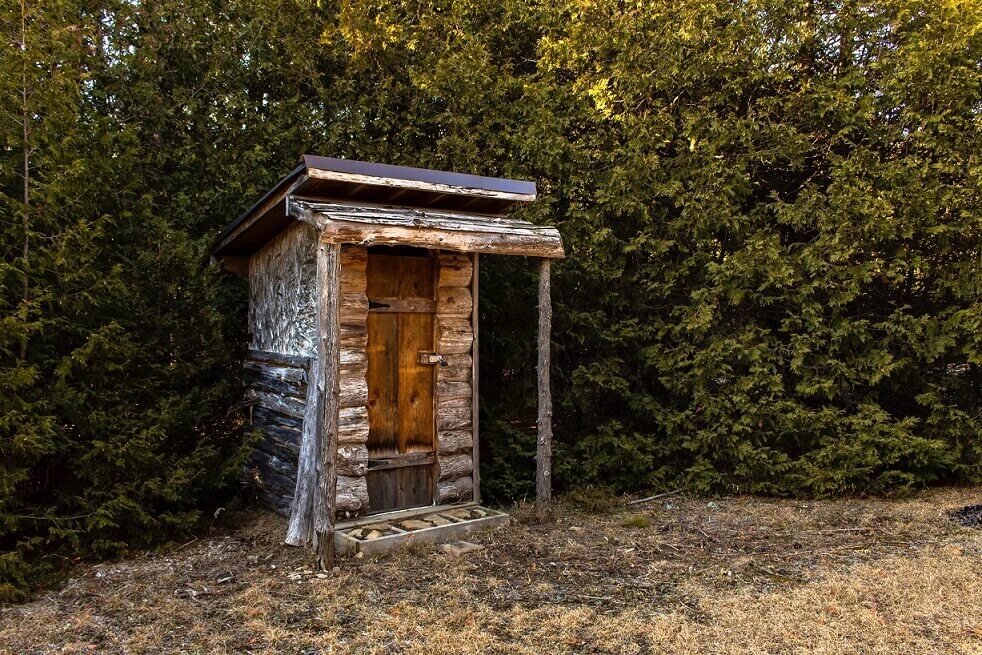
HOW MUCH DOES A COMPOSTING TOILET COST?
So now that you know how does compost toilet work you might be wondering about the cost of a compost toilet. There are different types of compost toilets but they all use the same principles of evaporation and decomposition. One type of such eco-toilet is the self-contained compost toilet, which houses all the systems used for composting inside the toilet itself. These kinds of compost toilets are often found in smaller spaces like RV’s and campers, boats and tiny homes and usually need to be emptied by hand. A self-contained composting toilet starts at around $600 and can run into the thousands, up to $2,500, for more advanced models. Different features that might cause a self-contained composting toilet to come with a higher price tag include aeration fans or heating elements, which help keep the temperature and the oxygen at the optimal levels at all times. Self contained compost toilets tend to be the cheaper option of compost toilets and the one best suited for spots with limited space, like personal homes and small businesses or community centers.
Another type of composting toilet that is a great option is the split system compost toilet. A split system compost toilet is generally best for larger spaces, as the chamber for composting is usually placed below the toilet itself, sometimes in a basement. There are many benefits to using a split system compost toilet, if space allows. When the composting chamber is housed in a basement or similar area, it lends the option of having multiple toilets in different spots in the home or business that are linked to the same composting chamber. Although these systems tend to be larger and more expensive than the self-contained alternative, they also usually require less maintenance and are more efficient at completing the composting process. A split compost toilet ranges in cost from $2,500 to $5,000. These systems are often found in large lodges, national parks and even commercial sporting facilities, making it very likely that many people have used a compost toilet without even realizing it.
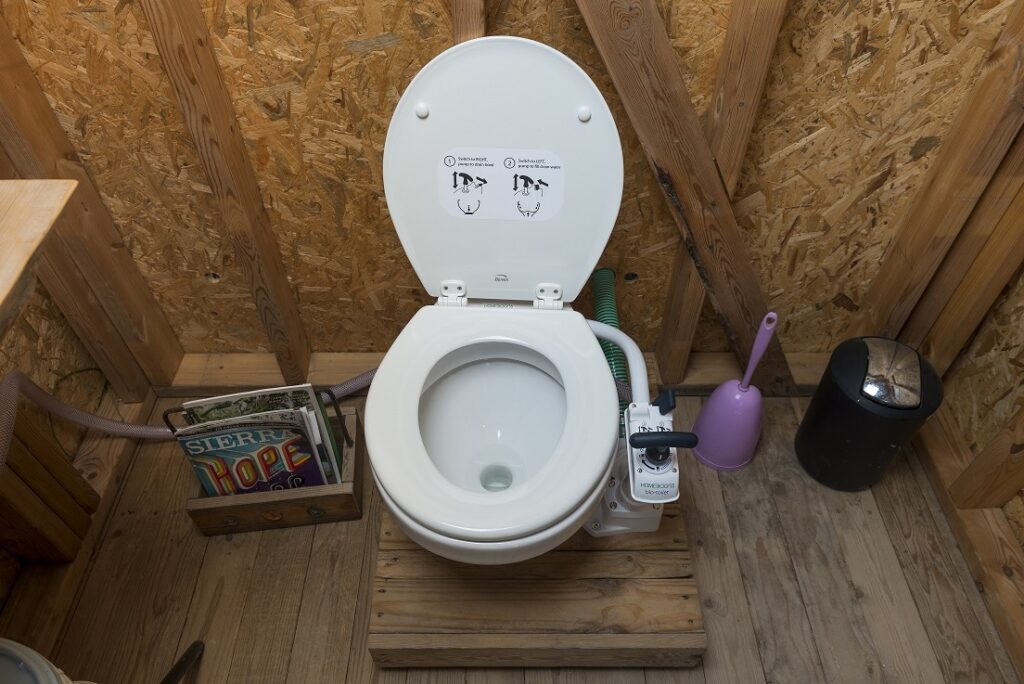
THE BENEFITS OF COMPOSTING TOILER VS OTHERS
If you like the idea of using an eco-friendly toilet but aren’t quite sold on the traditional composting toilet, have no fear. There are other eco-toilet options out there and we have a feeling you will find one that works for you and your lifestyle.
One kind of eco-toilet that has a very similar flush experience to a traditional toilet, is a low-flow toilet. While a standard, traditional toilet uses up to 6 gallons of water for every flush, a low-flow toilet uses only 1.6 gallons of water for flush, while giving the user the same power and flushing experience as they are used to. Another eco-toilet option commonly used is the dual-flush toilet, which provides two separate flushing options. More commonly seen indoors, a dual-flush toilet has the flusher choose between a button for liquid waste and a button for solid waste.
Like an upgraded version of the traditional compost toilet, the HomeBiogas Bio-Toilet is a brilliant eco-toilet option that goes above and beyond the basic duties of a toilet. Think about how a compost toilet works, add the money saving production of renewable energy to be used onsite, and you’ve got the HomeBiogas Bio-Toilet Kit. Pretty awesome right?! Biogas is a gas produced from the decomposition of organic matter by bacteria in the absence of oxygen. The HomeBiogas Bio-Toilet Kit allows those looking for a more sustainable way of living to have an eco-toilet that also produces biogas which can be used for cooking meals. The HomeBiogas Bio-Toilet is easy to install, safe and hassle-free to use and allows you to complete a full eco-cycle, all from your home.
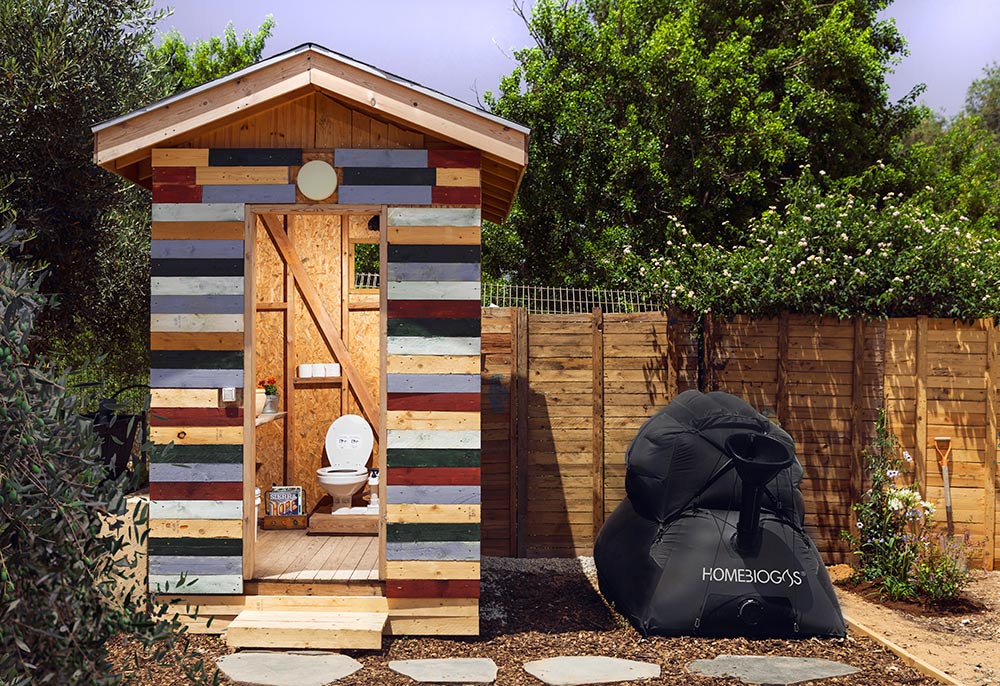
HOMEBIOGAS ALTERNATIVE TO COMPOST TOILET
The HomeBiogas Bio-Toilet is the ecologically friendly and economically efficient choice for the environmentally conscious as well as the financially conscious person. The toilet is a prime solution for communities and locals where water or sewage systems are not easy to access. It’s also a great option for heavily manicured places, like golf courses.
While using the bathroom isn’t the most popular of topics, it’s something we all do throughout the day and that will never change. What we can change is the kind of toilet we use and how it impacts the environment. If you’re ready to embrace change in your life in a way that helps you turn your waste into renewable energy, check out the HomeBiogas Bio Toilet Kit. By turning pollutant body waste into a valuable resource, the Bio Toilet is a solution for anyone looking to make a positive impact in the world and lead a self-sustainable life.





